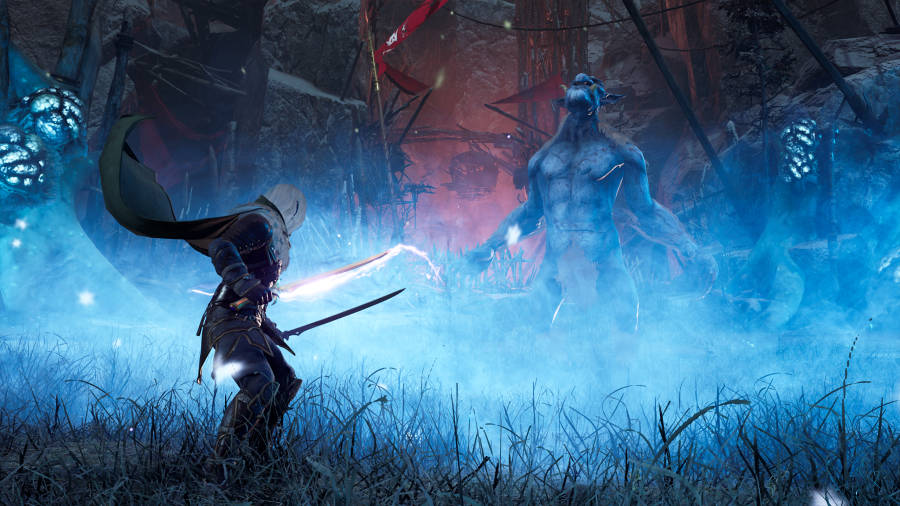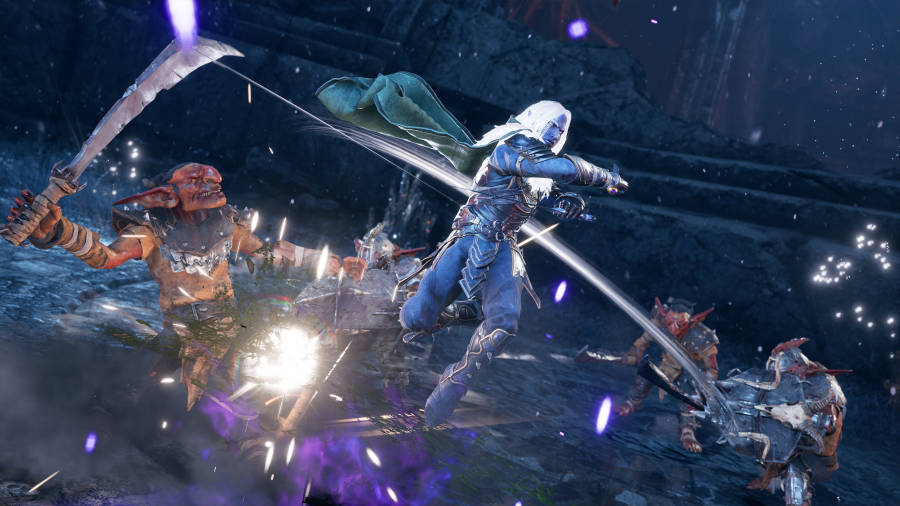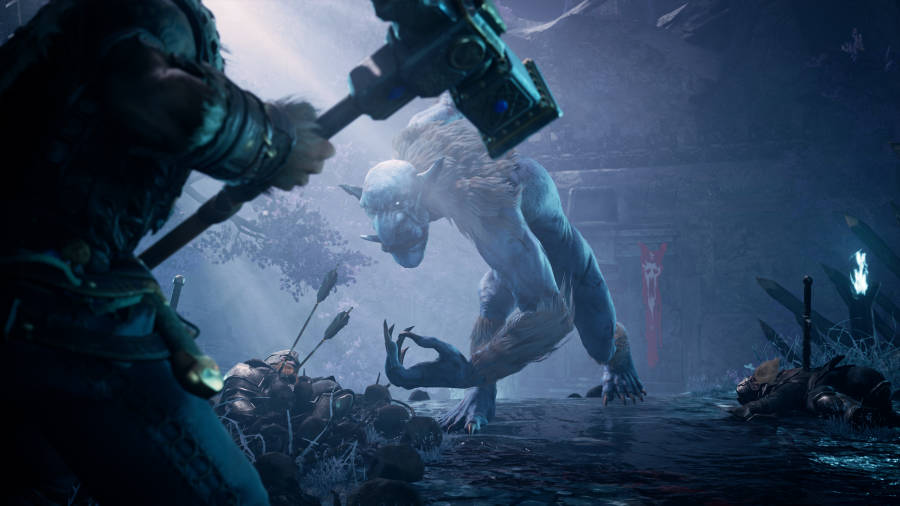Five thoughts on Dungeons & Dragons: Dark Alliance

We’re just starting our playthrough of Dungeons & Dragons: Dark Alliance, but we haven’t done enough to write our full review.
But(!) we do have some thoughts.
In several hours of gameplay include the tutorial, story missions and co-op, we’ve come across a few things. This is what we found.
1. This isn’t Baldur’s Gate or Pathfinder: Kingmaker. You won’t feel like you’re playing a tabletop game. This is more like Diablo or Skyrim but with D&D elements.
It’s a hack-and-slash-and-loot action RPG, but with a lot of things you’ll recognize from D&D. Example: After you defeat all enemies in an area, you can take a short rest to heal and get all your consumables (i.e. health potions) replaced. If you don’t short rest, you get a higher loot chance.
Critical hits do massive damage. Enemies usually feature a caster or other leader, a couple ranged minions and a couple melee minions. Leveling up means adding to your ability scores and picking new feats to push your powers. But it’s not tedious. There are no turns. You slam your hammer into the bad guys, loot the room, take a rest and keep on moving.
Order Dungeons & Dragons: Dark Alliance on Xbox or PlayStation.

2. The story will be familiar to some fans. Very familiar. If you’ve read RA Salvatore’s D&D novels, you’ll know the characters — Drizzt Do’Urden, Catti-brie, Wulfgar and Bruenor Battlehammer — and their enemies — a “dark alliance” of bad guys — and the thing they seek — a crystal shard. Yes, that crystal shard. From the book The Crystal Shard. In fact, the game mostly plays out the story of The Crystal Shard, so if you’ve read the book and enjoyed it, playing through the story as your favorite characters will feel pretty fun.

3. Each character feels totally different. The four characters have unique playstyles. While the basic controls are the same (move around the battle, string together combos, make critical hits, build up your power meter til you can do your character’s signature move), each character feels different and you’ll play the game with each one in a totally different fashion. Wulfgar is powerful but slow, and in big battles, he’ll be a good tank though sometimes too slow to avoid baddies’ quick combos. Drizzt meanwhile is mega fast, darting around the battle field, inflicting damage and staggering foes wherever he can. But he has less health, so watch out.

4. It’s played best in co-op. Solo mode is fine (and fun!) but you’re limited in what you can do. The game shines in co-op when Catti-brie lobs in ranged attacks while the massive troll is focused on Wulfgar and Drizzt darts around making attacks.
As mentioned above, it’s a hack and slash game, but these sorts of D&D elements And the party makeup is one of those D&D elements that makes this game feel familiar to fans of the tabletop RPG.

5. The control scheme is not great. I’ll be changing it next time I sign in to the game. The combat system is based around button presses on the trigger and shoulder buttons, kind of like a first-person shooter. But I just can’t bust off quick combos with my pointer finger on the triggers. It doesn’t work well for me, and I found my hands getting tired.







